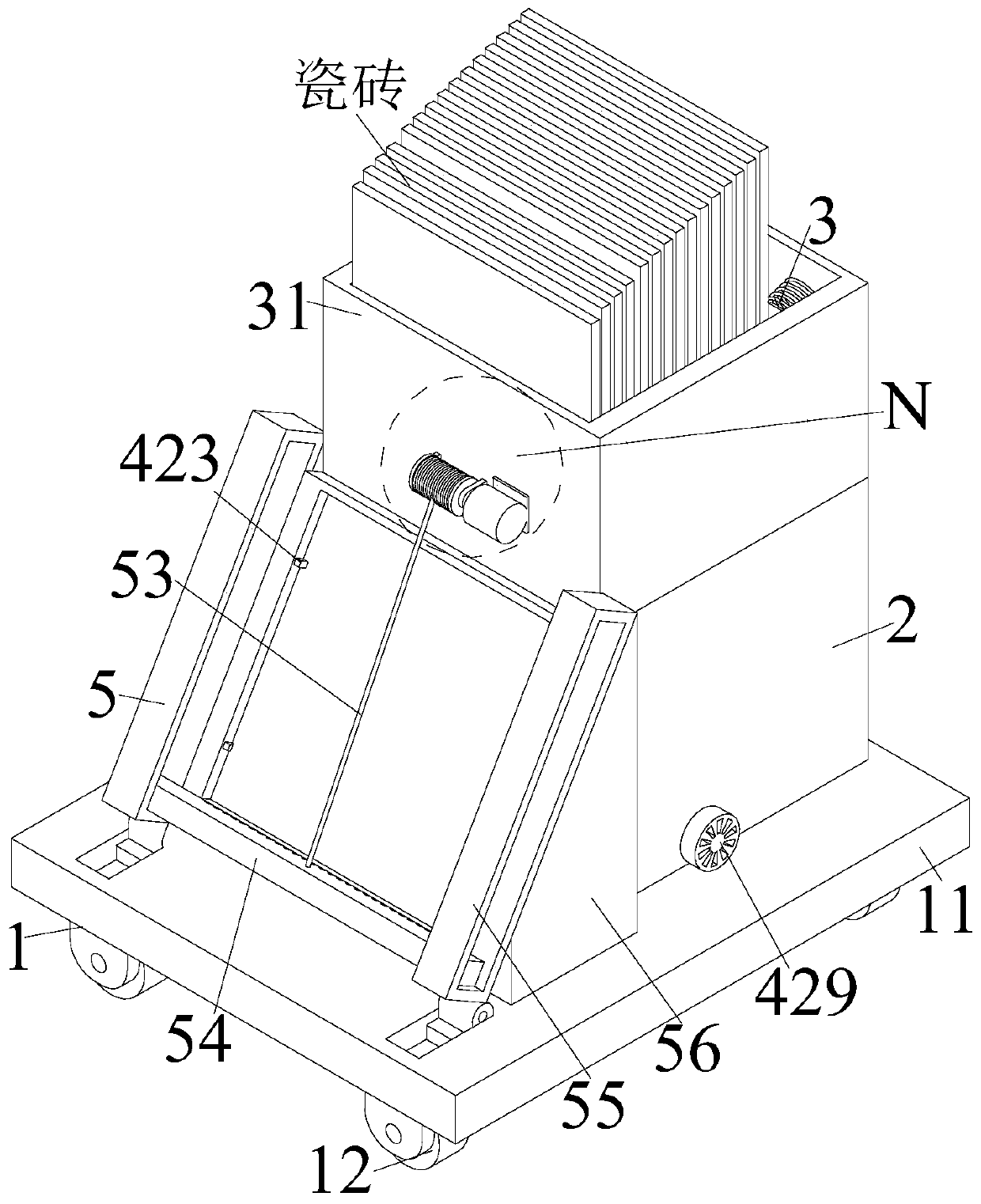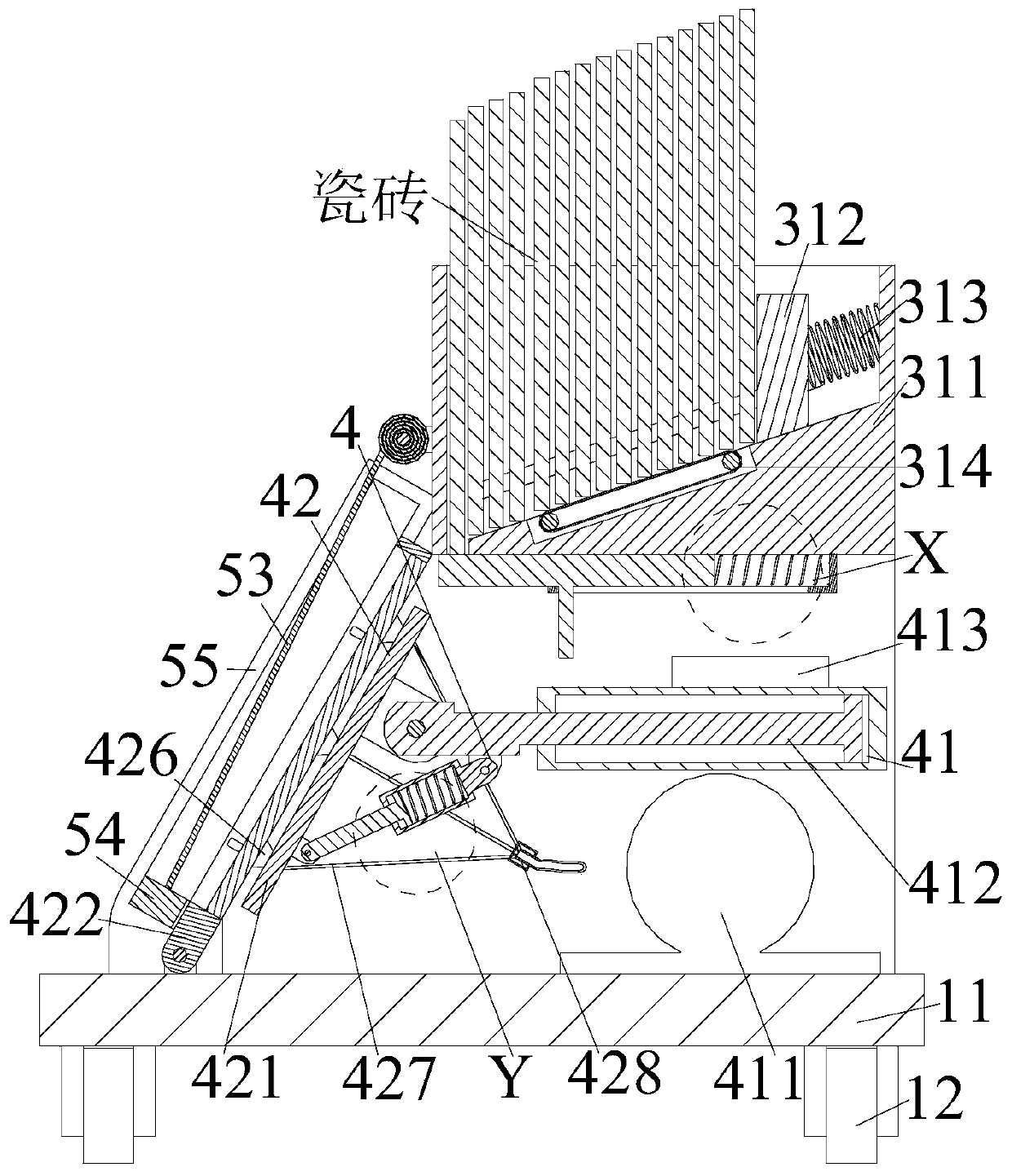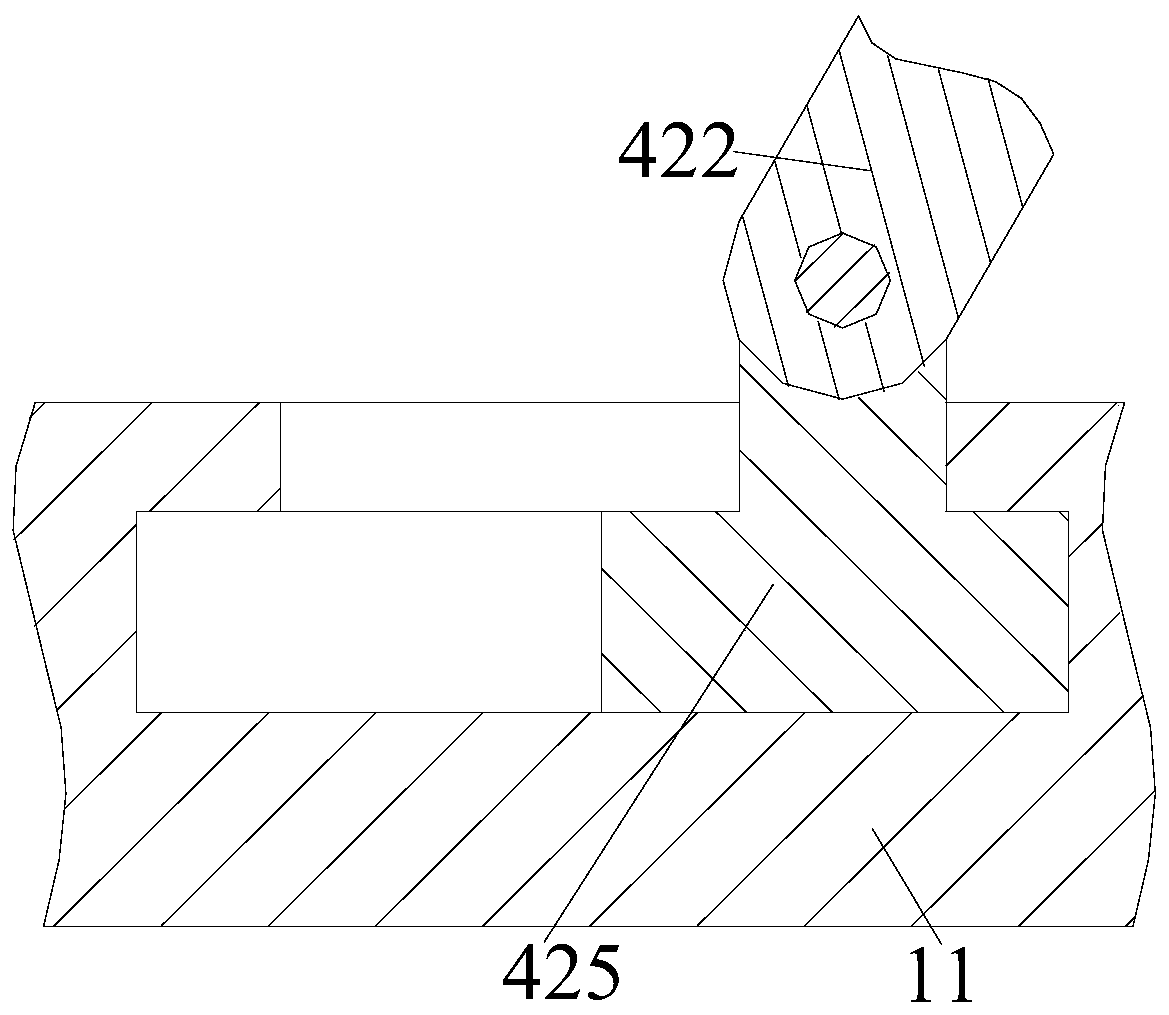Indoor decoration wall tile laying device
A technology of laying device and interior decoration, applied in the direction of construction and building structure, can solve the problems of uneven cement application, cumbersome process of placing wall tiles, and low accuracy of manual installation, so as to reduce manual labor, reduce cumbersome processes, and improve The effect of laying efficiency
- Summary
- Abstract
- Description
- Claims
- Application Information
AI Technical Summary
Problems solved by technology
Method used
Image
Examples
Embodiment Construction
[0033] In order to make the technical means realized by the present invention, creative features, goals and effects easy to understand, the following combination Figure 1 to Figure 7 , to further elaborate the present invention.
[0034] A device for laying decorative wall tiles for interior decoration, comprising a mobile device 1, two side panels 2, a feeding device 3, a laying device 4 and a plastering device 5, the upper middle of the mobile device 1 is equipped with side panels 2 symmetrically front and rear, The upper end of the side plate 2 is installed with a feeding device 3 by welding, and a laying device 4 is arranged under the feeding device 3, and the laying device 4 is installed inside the side plate 2, and the left end of the laying device 4 is provided with a plastering device 5; wherein:
[0035] Described moving device 1 comprises mounting plate 11 and four moving wheels 12, and four corners of mounting plate 11 lower ends are all equipped with moving wheels...
PUM
 Login to View More
Login to View More Abstract
Description
Claims
Application Information
 Login to View More
Login to View More - R&D
- Intellectual Property
- Life Sciences
- Materials
- Tech Scout
- Unparalleled Data Quality
- Higher Quality Content
- 60% Fewer Hallucinations
Browse by: Latest US Patents, China's latest patents, Technical Efficacy Thesaurus, Application Domain, Technology Topic, Popular Technical Reports.
© 2025 PatSnap. All rights reserved.Legal|Privacy policy|Modern Slavery Act Transparency Statement|Sitemap|About US| Contact US: help@patsnap.com



